#lowlands 2005
Explore tagged Tumblr posts
Text
Cloud atlas of Mars showcases array of atmospheric phenomena

(This image displays two atmospheric phenomena: the white curved lines are gravity wave clouds, while the brown areas are dust lifted from the ground by wind. The color shift visible in the dust lifting event might be indicative of very fast winds, a phenomenon currently under investigation by other members of the team. Credit: ESA/DLR/FU Berlin.)
"Cloud enthusiasts have a new tool to investigate striking formations in the skies above the red planet. A browsable database of 20-years-worth of images of clouds and storms, created by the German Aerospace Centre (DLR) in Berlin, is helping scientists better understand how and where features arise in the Martian atmosphere and what they can tell us about the climate of Mars and other planets.
The Mars 'Cloud Atlas', which is available to the public, has been presented this week at the Europlanet Science Congress (EPSC) 2024 in Berlin by Daniela Tirsch of DLR.

(An example of cloud streets over Vastitas Borealis, a large area near the North Pole mostly devoid of craters. . Credit: ESA/DLR/FU Berlin/A. Cowart)
The images in the Cloud Atlas have been captured by the High Resolution Stereo Camera (HRSC) instrument, which has been in orbit on board the European Space Agency (ESA) Mars Express spacecraft since 2005. Although Mars has a very thin atmosphere, numerous cloud formations and dust storm phenomena can develop from water and carbon dioxide ice crystals as well as dust particles.
"Clouds on Mars are just as diverse and fascinating as those we see in our skies on Earth, with some features unique to the red planet. One of my favorite phenomena are the beautiful 'cloud streets'—linear rows of fleecy clouds that develop around the huge volcanic Tharsis rise and the northern lowlands in northern spring and summer. While they resemble cumulus clouds on Earth, they are formed under different atmospheric conditions," said Dr. Tirsch. "We also see impressive dust clouds that can spread hundreds of kilometers—a phenomenon we luckily don't experience on Earth."
continue reading
#mars#mars weather#mars clouds#water on mars#solar system#sun#energy#magnetic field#mars atmosphere#carbon dioxide#mars storms#planet#climate#clouds#cosmos#volcanism#temperature#ESA#NASA#evolution
21 notes
·
View notes
Text
Interview with James Dickson of The Chills! (by Matthew Kenneth)
Interview with James Dickson 8/8, 8/9 2024 James Dickson was in The Chills (Keyboards: ‘99-’05, bass: ‘05-’18)

MK: So how did you joining The Chills come about? When was that? You were on keyboards first, correct?
JD: I saw Martin during a party I was performing at early in 1999 - chatted to him briefly outside which he didn’t seem to recall later. Months later I saw him pass by the piano shop I was working at in south Dunedin - I went out and caught up with him, reminded him that I was available if he ever needed a guitar player, bassist or keyboard player. He said actually yes as he’d been asked by Neil Finn if he could perform at a New Year's concert in Auckland. At this time Todd and Rodney had just recently joined but were yet to do a show.
MK: How familiar were you with him, with his music. Had you seen them play before then? 1999 would have been not long after a long string of successive LPs. A few years after Sunburnt. Assuming there was an age difference, did you see things change dramatically in Dunedin, in NZ or were you too young maybe then to have seen the early days of the scene and the changes that occurred (if any).
JD: I was a big fan of Submarine Bells (introduced to it by my older brother) but had been in Dunedin only a few years at that point.I was 12 years younger. I had seen that he was in the lowlands and wanted to join up to help him get cracking.
MK: Like, down. Emotionally etc.
JD: Well yes, in a musical sense. But for instance, a chap in the band I was in said to me that I shouldn’t join as “Martin is a junkie”. So I quit that band and joined The Chills to help Martin in whatever way I could.

MK: So you joined. With a gig already looming. NYE.
JD: 20 songs to learn in three months I recall.
MK: Doable
JD: Some practices he bailed out on which ramped up the pressure.
MK: On keys? I would assume it being a local crowd, no pressure to play "the hits".
JD: Yeah. Always had to play "Leather Jacket" and "Pink Frost." Almost every single show I’m fairly sure.
MK: Lost EP and Brave Words era? How did rehearsals go?
JD: Yes, four from Brave Words and at a few shows we performed "Whole Weird World." Rehearsals were great for me at any rate. They went well for the most part.
MK: Were you learning keyboard parts that had already been established? Andrew Todd, Peter Allison..
JD: Yes, some were challenging like "Efflorescence and Deliquesce." Many I wrote parts for.
MK: Favorite song to play?
JD: "Dan Destiny and the Silver Dawn"

MK: How frequently did the band play after that?
JD: Infrequent for a bit though we rehearsed regularly. (Sends me complete compiled setlists)
MK: How were shows received in the early 2000s? Tours? When did you switch to bass?
JD: Happy and impressed crowds for the most part. Some were diabolical due to Martin being sick.
MK: When/how did the switch come about? To bass I mean.
JD: December 3rd 2005 was my first show on bass. At Emerson’s brewery in Dunedin. We were a three piece for a while. I had let Rodney go because I was tired of not hearing what I wanted to hear on bass and he was disinterested in general.
MK: Was there not a lot of new material in the 2000s?
JD: Kinda had to coax it out of him. He was on autopilot. Once I got on bass it was different.
MK: Did you help write/arrange from 2005?
JD: Yes, and also before.
MK: It must've been exciting touring for SB's. New songs, new record, North America etc .
JD: Making the album was very rewarding for me. It’s my favourite thing.
MK: What was your working relationship like? Friends? Were you close?
JD: Close friends, we talked honestly together about many difficult things.

MK: As a fan, I always felt that in his lyrics or in the subtext that he struggled with stuff. So many lyrics where he sounded like he felt like he was alone.
JD: I believe he struggled to feel connected. I took a phone call from Martin at 2am a few months back. I’m grateful that I was awake to talk and be true to my claim “you can call me anytime you’re struggling”
MK: So how long did it take to record Silver Bullets?
JD: Maybe twenty days or something like that I think?
MK: So you were his principal songwriting partner.
JD: I would say so but not too loudly because I wouldn’t want folks to think I was being attention seeking or anything like that.
MK: Lyrics too?
JD: Only in the smallest way. Little ideas or changing words - stuff like that.
MK: Was there a concerted effort to make these new Chills songs fit into the larger historical Chills story.
JD: Martin was keen to explore new ideas and happy for the songs to sound 21st century.
MK: I think despite the newness, there was still The Chills stamp on it.
JD: I personally would describe that as his unique vocals and lyrics + magic reverb guitar lines and unusual chord progressions.

MK: Without having looked too closely at the tours database to see how often you came to the states/north America in those 20 yrs I would assume this tour felt special.
JD: Most definitely, it meant a lot to us and Martin in particular. The last shows he had in the USA previously were bad memories he hoped to alter by way of this tour. He felt he had addressed those bad memories in the way hoped by replacing them with warm happy new ones.
MK: Lack of attendance? Poor promotion?
JD: Hmm, no - more like troubles behind the scenes.
MK: But the SBs tour went better?
JD Absolutely, he felt he had addressed those bad memories in the way he hoped by replacing them with warm, happy, new ones.
MK: He seemed happy. Based on the show I saw and followed him on social media.
Interview concluded as James was occupied with mourning the loss of his friend and Martin’s funeral etc. Thank you, James, for your time and candid and warm words. Much appreciated.
www.firerecords.com

2 notes
·
View notes
Text

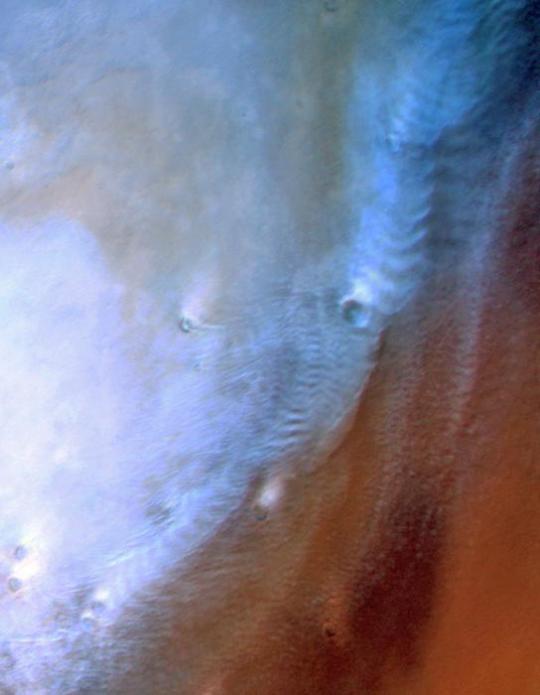
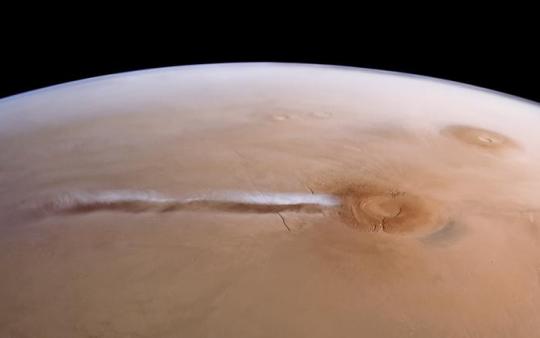


Cloud atlas of mars showcases array of atmospheric phenomena
Cloud enthusiasts have a new tool to investigate striking formations in the skies above the Red Planet. A browsable database of 20-years-worth of images of clouds and storms, created by the German Aerospace Centre (DLR) in Berlin, is helping scientists better understand how and where features arise in the martian atmosphere and what they can tell us about the climate of Mars and other planets. The Mars ‘Cloud Atlas’, which is available to the public at https://hrscteam.dlr.de/public/data.php, has been presented this week at the Europlanet Science Congress (EPSC) 2024 in Berlin by Daniela Tirsch of DLR.
The images in the Cloud Atlas have been captured by the High Resolution Stereo Camera (HRSC) instrument, which has been in orbit on board the European Space Agency (ESA) Mars Express spacecraft since 2005. Although Mars has a very thin atmosphere, numerous cloud formations and dust storm phenomena can develop from water and carbon dioxide ice crystals as well as dust particles.
“Clouds on Mars are just as diverse and fascinating as those we see in our skies on Earth, with some features unique to the Red Planet. One of my favourite phenomena are the beautiful ‘cloud streets’ – linear rows of fleecy clouds that develop around the huge volcanic Tharsis rise and the northern lowlands in northern spring and summer. While they resemble cumulus clouds on Earth, they are formed under different atmospheric conditions,” said Dr Tirsch. “We also see impressive dust clouds that can spread hundreds of kilometres – a phenomena we luckily don’t experience on Earth.”
Dust plays a major role in the atmosphere and climate of Mars. Rare upwelling events can leave beige, dust-laden blobs hanging in the atmosphere. Large differences in temperature and air pressure at certain seasons can result in stronger-than-usual winds that lift large amounts of dust from the Martian surface. Dust clouds spreading from the tops of giant volcanoes take on the appearance of eruption clouds, although they are no longer active.
Large spiral dust storms and cyclone systems can also be observed each year near the Martian north pole. Studying these phenomena is crucial to scientists in understanding the atmosphere and air mass circulation on Mars.
Rippling ‘gravity clouds’ are one of the most common formations on both Mars and the Earth. They are seen at mid-latitudes in winter for both hemispheres, as well as over the Tharsis volcanic plateau in southern winter. Lee waves, a special type of gravity clouds, can build up on the downwind side of ridges, mountains and other obstacles to create repeating ridge formations.
Some types of clouds studied are specific to locations and seasons; others like ‘twilight clouds’ can appear in the early morning at any place or time of year.
The HRSC Cloud Atlas will provide valuable insights into the physical nature and appearance of clouds and storms, the time of their occurrence and their location. This knowledge will help better understand the atmospheric dynamics and the climate cycles on Mars, as well as providing input for studies of the climate on other planets such as Earth and Venus. The DLR team has already used the database to create global maps showing the occurrence of various types of cloud as a function of season and location.
“As Mars Express has been extended by ESA until at least 2026, this will enable us keep filling this database and refine even further our understand of Mars atmosphere,” said Dr Tirsch.
TOP IMAGE: An example of cloud streets over Vastitas Borealis, a large area near the North Pole mostly devoid of craters. Credit ESA/DLR/FU Berlin/A. Cowart
CENTRE IMAGE: Lee waves are a special type of cloud created by the wind encountering obstacles and build up on the ‘leeward‘ or downwind side. The geometries of the lee waves depend on the shape of the obstacles. Credit ESA/DLR/FU Berlin.
LOWER IMAGE: This elongated cloud has formed as a result of wind encountering the Arsia Mons mountains. It forms almost every day during a specific season, from early morning until noon. Credit Credit: ESA/DLR/FU Berlin/A. Cowart.
BOTTOM IMAGE: Lee waves are a special type of cloud created by the wind encountering obstacles and build up on the ‘leeward‘ or downwind side. The geometries of the lee waves depend on the shape of the obstacles. Credit ESA/DLR/FU Berlin.
FINAL IMAGE: This image displays two atmospheric phenomena: the white curved lines are gravity wave clouds, while the brown areas are dust lifted from the ground by wind. The colour shift visible in the dust lifting event might be indicative of very fast winds, a phenomenon currently under investigation by other members of the team. Credit ESA/DLR/FU Berlin.
4 notes
·
View notes
Text
Skull Island 2005 - my OC Fauna
This post will discuss my OC creatures for Skull Island 2005. Now I made these OC creatures as in the 2005 Peter Jackson King Kong movie, the island shrank to a fraction of its original size due to earthquakes that plagued the island for centuries, bringing the fauna closer together and even driving some unknown species into extinction. On top of that, the shrinking conditions (both literal and figurative) resulted in there being more predator species than prey species. So all that begs the question; what other species were present on Skull Island before the shrinking began? Well, in my proposed idea for the 10th season of The Genie Team, Skull Island is in the Atlantic Ocean, in the Bermuda Triangle regions and is in its original massive size, so that means that some OC creatures of mine will have to be added to help fill in the gaps between the numbers of predator species and prey species… and these four OC creatures are all dinosaurs.
Skull Island Iguanodon — found in the open lowlands and the dense jungles, Skull Island Iguanodon live in herds consisting of dozens of individuals, ranging from chicks to adults. Male Iguanodon are bigger and more robust than females, as adult males reach 45-50 feet long when fully grown, while adult females grow to 40 feet long. Not to mention, the males have thick’n’sharp spike-like ostiaderms down their tails and have bigger and thicker thumb spikes, while females are less armored and armed. Unlike Brontosaurus or Ferrucutus, Skull Island Iguanodon herds have more than one adult male, which is needed to provide extra protection from the many predators of the island. The one dominant bull is bigger than the non-dominant males, reaching 50+ feet. Like Ligocristus, Iguanodon females lay a ton of eggs each, with a single female laying 20 to 25 eggs each. Iguanodon nest in the same way as Ligocristus; nesting on small islands in the middle of rivers or lakes of the open lowlands. The young that hatch are extremely vaunerable to the many predators of the island, so they always stick close to the herds.
Skull Island Altirhinus — these guys can be found in the open lowlands and dense jungles like Iguanodon. Like their ancestors, Skull Island’s Altirhinus have huge bulbous noses, with the males having the bigger and colorful ones. These guys’ nesting behaviors are similar to Iguanodon, as are their social structures.
Skull Island Lurdusaurus — found in the dense jungles and soaking wetlands, Skull Island Lurdusaurs are shorter and slower than Iguanodon and Altirhinus, but are bulkier and just as long. Lurdusaurs’ nesting behaviors are different as they nest and lay their eggs in nest mounds that are perfectly camouflaged among the dense foliage of the jungles, and a single female can lay up to 26 eggs each. On top of that, the herds become resident when nesting and guarding their eggs in order to protect their young. When the eggs do hatch, the young are always close to the herd so the adults can shield them from the many predators of the island.
Skull Island Leyallenasaura — found in the open lowlands and dense jungles, Skull Island’s Leyallenasaura are very fast and very weary. These guys, like Venatosaurus, lack feathers that their Mesozoic ancestors had due to the tropical climate of the island as a thick coat of feathers hampered efficient thermal regulation. And being 6 to 7 feet long, Skull Island Leyallenasaura were worthy meals and/or snacks to the many predators of the island. And because of that, Leyallenasaura use speed to escape said predators, as well as being close to and around herds of other dinosaurs like Brontosaurus, Ferrucutus, Ligocristus, Iguanodon, Sylvaceratops, etc. When it comes to nesting, Leyallenasaura dig and build nests in the hollow bases of trees and a single female can lay up to 30-33 eggs each, and the young are able to leave the nests and join the adults immediately upon hatching. And like adults, the hatchlings have shades of green and brown to help them blend in with their surroundings. Though Leyallenasaura found in the jungles have shades of green and brown to help them blend in with the logs and dense foliage around the trees while Leyallenasaura found in the open lowlands have shades of green and light green that help them blend in with the tall dense grass.
As a quick side note, these species eat a lot of plants that ferns compete against, though they do sometimes occasionally eat ferns. But other than that, they eat other plants a lot, which helps Atercurisaurus as the island’s only stegosaurid eats primarily ferns. So with ferns’ competitors cleared out, the ferns grow in huge numbers, allowing Atercurisaurus to have a feast. This cycle is repeated and reversed with the respective plant species taking the blank areas for their respective eaters to have. As for the herd members, they range from hatchlings to adults, with juveniles and subadults being among them, and because of that, the size of the herds is huge, with dozens of members each.
As another quick side note, Skull Island Iguanodon and Altirhinus can also be sometimes seen traveling with Megaprimatus Kong, sharing food with the giant apes and the males helping the male Kongs in defending themselves and the females and young, showing a symbiotic relationship between dinosaur and mammal.
#the genie team#king kong 2005#skull island 2005#skull island#iguanodon#altirhinus#lurdusaurus#leyallenasaura#genie team#bermuda triangle
4 notes
·
View notes
Note
Hi Dr Reames!
Would you say that Macedon shared the same "political culture" with its Thracian and Illyrian neighbours, like how most Greeks shared the polis structure and the concept of citizenship?
I don't really know anything about Macedonian history before Philip II's time, but you've often brought up how the Macedonians shared some elements of elite culture (e.g. mound burials) with their Thracian neighbours, as well religious beliefs and practices.
I've only ever heard these people generically described as "a collection of tribes (that confederated into a kingdom)", which also seems to be the common description for nearby "Greek" polities like Thessaly and Epiros. So did these societies have a lot in common, structurally speaking, with Macedon? Or were they just completely different types of polities altogether?
First, in the interest of some good bibliography on the Thracians:
Z. H. Archibald, The Odrysian Kingdom of Thrace. Orpheus Unmasked. Oxford UP, 1998. (Too expensive outside libraries, but highly recommended if you can get it by interlibrary loan. Part of the exorbitant cost [almost $400, but used for less] owes to images, as it’s archaeology heavy. Archibald is also an expert on trade and economy in north Greece and the Black Sea region, and has edited several collections on the topic.
Alexander Fol, Valeria Fol. Thracians. Coronet Books, 2005. Also expensive, if not as bad, and meant for the general public. Fol’s 1977 Thrace and the Thracians, with Ivan Marazov, was a classic. Fol and Marazov are fathers of modern Thracian studies.
R. F. Hodinott, The Thracians. Thames and Hudson, 1981. Somewhat dated now but has pictures and can be found used for a decent price if you search around. But, yeah…dated.
For Illyria, John Wilkes’ The Illyrians, Wiley-Blackwell, 1996, is a good place to start, but there’s even less about them in book form (or articles).
—————
Now, to the question.
BOTH the Thracians and Illyrians were made up of politically independent tribes bound by language and religion who, sometimes, also united behind a strong ruler (the Odrysians in Thrace for several generations, and Bardylis briefly in Illyria). One can probably make parallels to Germanic tribes, but it’s easier for me to point to American indigenous nations. The Odrysians might be compared to the Iroquois federation. The Illyrians to the Great Lakes people, united for a while behind Tecumseh, but not entirely, and disunified again after. These aren’t perfect, but you get the idea. For that matter, the Greeks themselves weren’t a nation, but a group of poleis bonded by language, culture, and religion. They fought as often as they cooperated. The Persian invasion forced cooperation, which then dissolved into the Peloponnesian War.
Beyond linguistic and religious parallels, sometimes we also have GEOGRAPHIC ones. So, let me divide the north into lowlands and highlands. It’s much more visible on the ground than from a map, but Epiros, Upper Macedonia, and Illyria are all more alike, landscape-wise, than Lower Macedonia and the Thracian valleys. South of all that, and different yet again, lay Thessaly, like a bridge between Southern Greece and these northern regions.
If language (and religion) are markers of shared culture, culture can also be shaped by ethnically distinct neighbors. Thracians and Macedonians weren’t ethnically related, yet certainly shared cultural features. Without falling into colonialist geographical/environmental determinism, geography does affect how early cultures develop because of what resources are available, difficulties of travel, weather, lay of the land itself, etc.
For instance, the Pindus Range, while not especially high, is rocky and made a formidable barrier to easy east-west travel. Until recently, sailing was always more efficient in Greece than travel by land (especially over mountain ranges).* Ergo, city-states/towns on the western coast tended to be western-facing for trade, and city-states/towns on the eastern side were, predictably, eastern-facing. This is why both Epiros and Ainai (Elimeia) did more trade with Corinth than Athens, and one reason Alexandros of Epiros went west to Italy while Alexander of Macedon looked east to Persia. It’s also why Corinth, Sparta, etc., in the Peloponnese colonized Sicily and S. Italy, while Athens, Euboia, etc., colonized the Asia Minor and Black Sea coasts. (It’s not an absolute, but one certainly sees trends.)
So, looking at their land, we can see why Macedonians and Thracians were both horse people with their wide valleys. They also practiced agriculture, had rich forests for logging, and significant metal (and mineral) deposits—including silver and gold—that made mining a source of wealth. They shared some burial customs but maintained acute differences. Both had lower status for women compared to Illyria/Epiros/Paionia. Yet that’s true only of some Thracian tribes, such as the Odrysians. Others had stronger roles for women. Thracians and Macedonians shared a few deities (The Rider/Zis, Dionysos/Zagreus, Bendis/Artemis/Earth Mother), although Macedonian religion maintained a Greek cast. We also shouldn’t underestimate the impact of Greek colonies along the Black Sea coast on inland Thrace, especially the Odrysians. Many an Athenian or Milesian (et al.) explorer/merchant/colonist married into the local Thracian elite.
Let’s look at burial customs, how they’re alike and different, for a concrete example of this shared regional culture.
First, while both Thracians and Macedonians had shrines, neither had temples on the Greek model until late, and then largely in Macedonia. Their money went into the ground with burials.
Temples represent a shit-ton of city/community money plowed into a building for public use/display. In southern Greece, they rise (pun intended) at the end of the Archaic Age as city-state sumptuary laws sought to eliminate personal display at funerals, weddings, etc. That never happened in Macedonia/much of the northern areas. So, temples were slow to creep up there until the Hellenistic period. Even then, gargantuan funerals and the Macedonian Tomb remained de rigueur for Macedonian elite. (The date of the arrival of the true Macedonian Tomb is debated, but I side with those who count it as a post-Alexander development.)
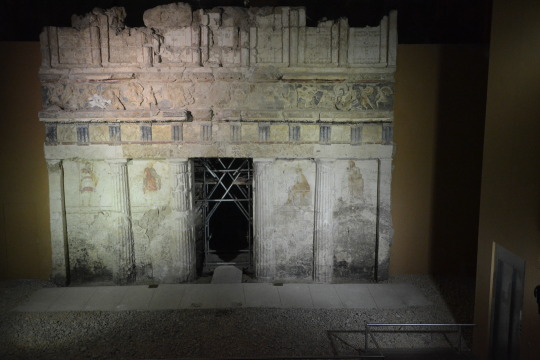
A “Macedonian Tomb” (above: Tomb of Judgement, photo mine) is a faux-shrine embedded in the ground. Elite families committed wealth to it in a huge potlatch to honor the dead. Earlier cyst tombs show the same proclivities, but without the accompanying shrine-like architecture. As early as 650 BCE at Archontiko (= ancient Pella), we find absurd amounts of wealth in burials (below: Archontiko burial goods, Pella Museum, photos mine). Same thing at Sindos, and Aigai, in roughly the same period. Also in a few places in Upper Macedonia, in the Archaic Age: Aiani, Achlada, Trebenište, etc.. This is just the tip of the iceberg. If Greece had more money for digs, I think we’d find additional sites.
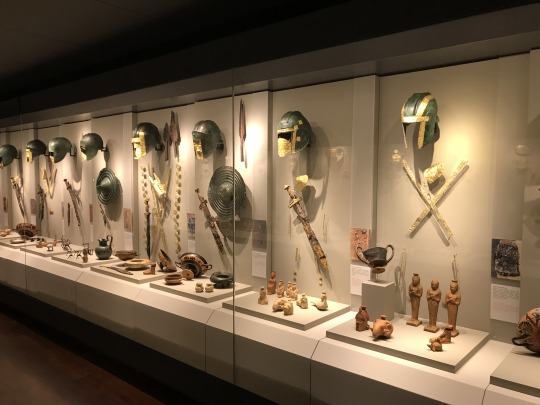

Vivi Saripanidi has some great articles (conveniently in English) about these finds: “Constructing Necropoleis in the Archaic Period,” “Vases, Funerary Practices, and Political Power in the Macedonian Kingdom During the Classical Period Before the Rise of Philip II,” and “Constructing Continuities with a Heroic Past.” They’re long, but thorough. I recommend them.
What we observe here are “Princely Burials” across lingo-ethnic boundaries that reflect a larger, shared regional culture. But one big difference between elite tombs in Macedonia and Thrace is the presence of a BODY, and whether the tomb was new or repurposed.
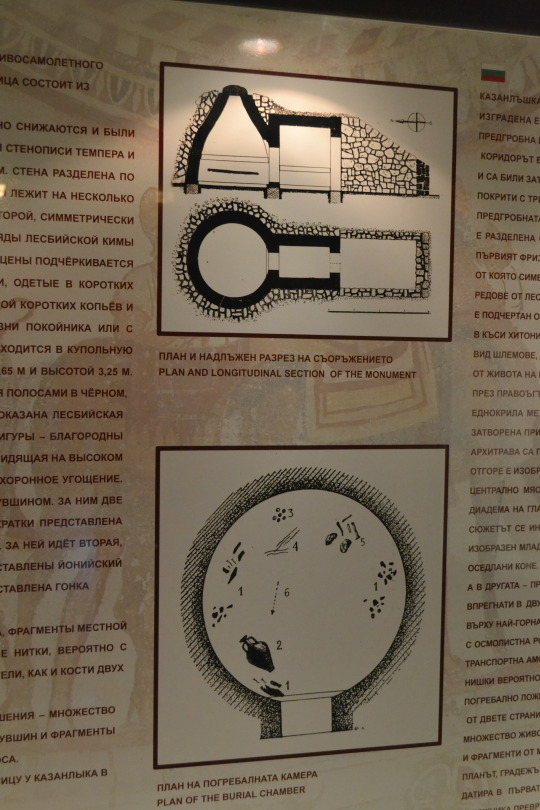

In Thrace, at least royal tombs are repurposed shrines (above: diagram and model of repurposed shrine-tombs). Macedonian Tombs were new construction meant to look like a shrine (faux-fronts, etc.). Also, Thracian kings’ bodies weren’t buried in their "tombs." Following the Dionysic/ Orphaic cult, the bodies were cut up into seven pieces and buried in unmarked spots. Ergo, their tombs are cenotaphs (below: Kosmatka Tomb/Tomb of Seuthes III, photos mine).

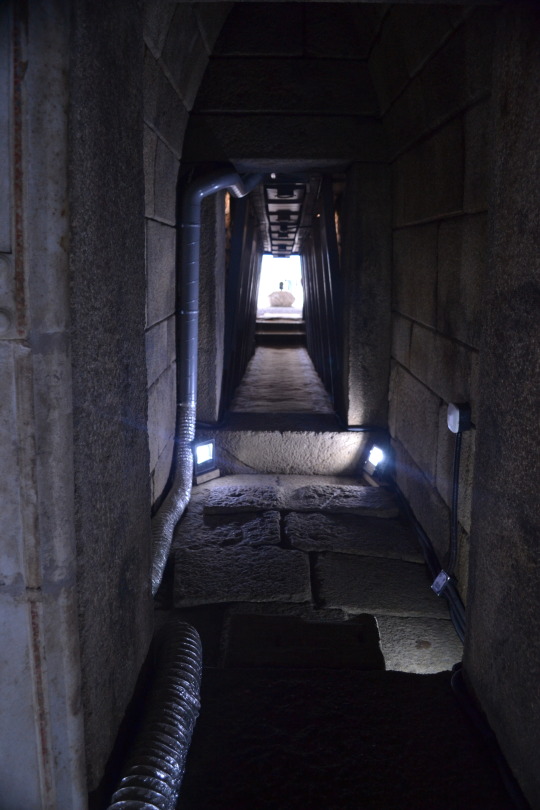
What they shared was putting absurd amounts of wealth into the ground in the way of grave goods, including some common/shared items such as armor, golden crowns, jewelry for women, etc. All this in place of community-reflective temples, as seen in the South. (Below: grave goods from Seuthes’ Tomb; grave goods from Royal Tomb II at Vergina, for comparison).



So, if some things are shared, others (connected to beliefs about the afterlife) are distinct, such as the repurposed shrine vs. new construction built like a shine, and the presence or absence of a body (below: tomb ceiling décor depicting Thracian deity Zalmoxis).

Aside from graves, we also find differences between highlands and lowlands in the roles of at least elite women. The highlands were tough areas to live, where herding (and raiding) dominated, and what agriculture there was required “all hands on deck” for survival. While that isn’t necessary for women to enjoy higher status (just look at Minoan Crete, Etruria, and even Egypt), it may have contributed to it in these circumstances.
Illyrian women fought. And not just with bows on horseback as Scythian women did. If we can believe Polyaenus, Philip’s daughter Kyanne (daughter of his Illyrian wife Audata) opposed an Illyrian queen on foot with spears—and won. Philip’s mother Eurydike involved herself in politics to keep her sons alive, but perhaps also as a result of cultural assumption: her mother was royal Lynkestian but her father was (perhaps) Illyrian. Epirote Olympias came to Pella expecting a certain amount of political influence that she, apparently, wasn’t given until Philip died. Alexander later observed that his mother had wisely traded places with Kleopatra, his sister, to rule in Epiros, because the Macedonians would never accept rule by a woman (implying the Epirotes would).
I’ve noted before that the political structure in northern Greece was more of a continuum: Thessaly had an oligarchic tetrarchy of four main clans, expunged by Jason in favor of tyranny, then restored by Philip. Epiros was ruled by a council who chose the “king” from the Aiakid clan until Alexandros I, Olympias’s brother, established a real monarchy. Last, we have Macedon, a true monarchy (apparently) from the beginning, but also centered on a clan (Argeads), with agreement/support from the elite Hetairoi class of kingmakers. Upper Macedonian cantons (formerly kingdoms) had similar clan rule, especially Lynkestis, Elimeia, and Orestis. Alas, we don’t know enough to say how absolute their monarchies were before Philip II absorbed them as new Macedonian districts, demoting their basileis (kings/princes) to mere governors.
I think continued highland resistance to that absorption is too often overlooked/minimized in modern histories of Philip’s reign, excepting a few like Ed Anson’s. In Dancing with the Lion: Rise, I touch on the possibility of highland rebellion bubbling up late in Philip’s reign but can’t say more without spoilers for the novel.
In antiquity, Thessaly was always considered Greek, as was (mostly) Epiros. But Macedonia’s Greek bona-fides were not universally accepted, resulting in the tale of Alexandros I’s entry into the Olympics—almost surely a fiction with no historical basis, fed to Herodotos after the Persian Wars. The tale’s goal, however, was to establish the Greekness of the ruling family, not of the Macedonian people, who were still considered barbaroi into the late Classical period. Recent linguistic studies suggest they did, indeed, speak a form of northern Greek, but the fact they were regarded as barbaroi in the ancient world is, I think instructive, even if not necessarily accurate.
It tells us they were different enough to be counted “not Greek” by some southern Greek poleis and politicians such as Demosthenes. Much of that was certainly opportunistic. But not all. The bias suggests Macedonian culture had enough overflow from their northern neighbors to appear sufficiently alien. Few Greek writers suggested the Thessalians or Epirotes weren’t Greek, but nobody argued the Thracians, Paiones, or Illyrians were. Macedonia occupied a liminal status.
We need to stop seeing these areas with hard borders and, instead, recognize permeable boundaries with the expected cultural overflow: out and in. Contra a lot of messaging in the late 1800s and early/mid-1900s, lifted from ancient narratives (and still visible today in ultra-national Greek narratives), the ancient Greeks did not go out to “civilize” their Eastern “Oriental” (and northern barbaroi) neighbors, exporting True Culture and Philosophy. (For more on these views, see my earlier post on “Alexander suffering from Conqueror’s Disease.”)
In fact, Greeks of the Late Iron Age (LIA)/Archaic Age absorbed a great deal of culture and ideas from those very “Oriental barbarians,” such as Lydia and Assyria. In art history, the LIA/Early Archaic Era is referred to as the “Orientalizing Period,” but it’s not just art. Take Greek medicine. It’s essentially Mesopotamian medicine with their religion buffed off. Greek philosophy developed on the islands along the Asia Minor coast, where Greeks regularly interacted with Lydians, Phoenicians, and eventually Persians; and also in Sicily and Southern Italy, where they were talking to Carthaginians and native Italic peoples, including Etruscans. Egypt also had an influence.
Philosophy and other cultural advances didn’t develop in the Greek heartland. The Greek COLONIES were the happenin’ places in the LIA/Archaic Era. Here we find the all-important ebb and flow of ideas with non-Greek peoples.
Artistic styles, foodstuffs, technology, even ideas and myths…all were shared (intentionally or not) via TRADE—especially at important emporia. Among the most significant of these LIA emporia was Methone, a Greek foundation on the Macedonian coast off the Thermaic Gulf (see map below). It provided contact between Phoenician/Euboian-Greek traders and the inland peoples, including what would have been the early Macedonian kingdom. Perhaps it was those very trade contacts that helped the Argeads expand their rule in the lowlands at the expense of Bottiaians, Almopes, Paionians, et al., who they ran out in order to subsume their lands.
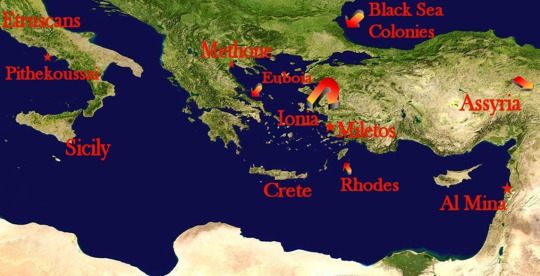
My main point is that the northern Greek mainland/southern Balkans were neither isolated nor culturally stunted. Not when you look at all that gold and other fine craftwork coming out of the ground in Archaic burials in the region. We’ve simply got to rethink prior notions of “primitive” peoples and cultures up there—notions based on southern Greek narratives that were both political and culturally hidebound, but that have, for too long, been taken as gospel truth.
Ancient Macedon did not “rise” with Philip II and Alexander the Great. If anything, the 40 years between the murder of Archelaos (399) and the start of Philip’s reign (359/8) represents a 2-3 generation eclipse. Alexandros I, Perdikkas II, and Archelaos were extremely capable kings. Philip represented a return to that savvy rule.
(If you can read German, let me highly recommend Sabine Müller’s, Perdikkas II and Die Argeaden; she also has one on Alexander, but those two talk about earlier periods, and especially her take on Perdikkas shows how clever he was. For those who can’t read German, the Lexicon of Argead Macedonia’s entry on Perdikkas is a boiled-down summary, by Sabine, of the main points in her book.)
Anyway…I got away a bit from Thracian-Macedonian cultural parallels, but I needed to mount my soapbox about the cultural vitality of pre-Philip Macedonia, some of which came from Greek cultural imports, but also from Thrace, Illyria, etc.
Ancient Macedonia was a crossroads. It would continue to be so into Roman imperial, Byzantine, and later periods with the arrival of subsequent populations (Gauls, Romans, Slavs, etc.) into the region.
That fruit salad with Cool Whip, or Jello and marshmallows, or chopped up veggies and mayo, that populate many a family reunion or church potluck spread? One name for it is a “Macedonian Salad”—but not because it’s from Macedonia. It’s called that because it’s made up of many [very different] things. Also, because French macedoine means cut-up vegetables, but the reference to Macedonia as a cultural mishmash is embedded in that.
---------------
* I’ve seen this personally between my first trip to Greece in 1997, and the new modern highway. Instead of winding around mountains, the A2 just blasts through them with tunnels. The A1 (from Thessaloniki to Athens) was there in ’97, and parts of the A2 east, but the new highway west through the Pindus makes a huge difference. It takes less than half the time now to drive from the area around Thessaloniki/Pella out to Ioannina (near ancient Dodona) in Epiros. Having seen the landscape, I can imagine the difficulties of such a trip in antiquity with unpaved roads (albeit perhaps at least graded). Taking carts over those hills would be daunting. See images below.

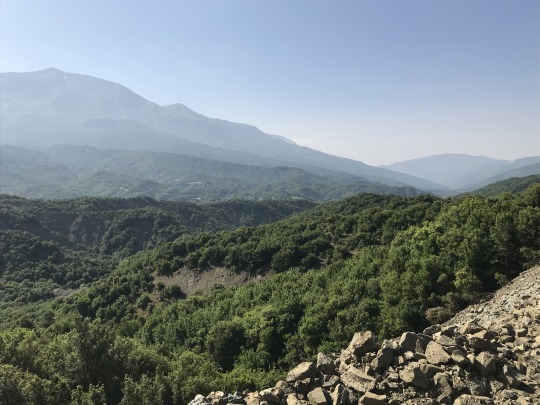
#asks#ancient Macedonia#ancient Thrace#ancient Epiros#ancient Thessaly#Argead Macedonia#pre-Philip Macedonia#Late Iron Age Greece#Archaic Age Greece#Thracian tombs#Macedonian tombs#Classics#tagamemnon#Alexander the Great#Philip II of Macedon#Philip of Macedon#women in ancient Macedonia#ancient Illyria#women in Illyria#Macedonian-Thracian similarities#religion in ancient Thrace#religion in ancient Macedonia
13 notes
·
View notes
Text
Get to Know Me Tag
i was tagged by @writeouswriter ~
LAST SONG: we're all eating each other, Juliet Ivy. i wish to find every song on earth about decomposing with your lover in a pile of leaves. surprisingly there are a lot
LAST MOVIE: Pride and Prejudice (2005) - fifteenth watch-through of my life. will i stop? no
CURRENTLY WATCHING: today i start emotional preparations to watch the new PJO
CURRENTLY READING: Catherine House, Elisabeth Thomas
LAST THING SEARCHED FOR WRITING PURPOSES: early 16th century Scottish lowland names
tagging for fun, no pressure: @stesierra, @oatmilktruther, @lyssentome, @thepitflower, @llrenesson, and anyone else who would like to participate!
3 notes
·
View notes
Text
Medicinal Plant Trading in Kovilpatti Taluk, South East Tamil Nadu
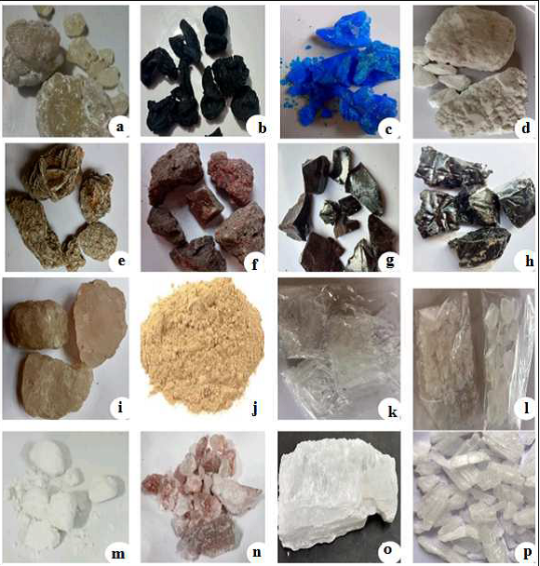
Abstract
Pharmaceuticals, herbal remedies, teas, spirits, cosmetics, sweets, dietary supplements, varnishes, and insecticides are just a few of the processed and packaged goods made from medicinal and aromatic plants (MAPs), which are also created in large quantities. In many instances, using basic materials from plants are considerably less expensive than using substitute chemical substances. Around the globe, 70,000 plant species are thought to be used in folk medicine. Objectives: The purpose of this investigation was to: document the most traded species of medicinal plants in the Kovilpatti Taluk, Thoothukudi District, Tamil Nadu, including parts used, Description of medicinal plant products, sourcing regions, harvesting frequencies; Materials and Methods: to profile and investigate the rationales for the involvement of stakeholders in medicinal plants related- activities; to understand socio-economic attributes of stakeholders who were traders, collectors. to assess constraints and opportunities for sustainable management of medicinal plants in the Thoothukudi District. The present also highlights the available medicinal plant products utilized for religious and rituals purpose in the herbal medicinal shop. The present study highlights the available medicinal plant products, quantity sold and the price of the medicinal plant products in the above retailer shops. Results: To study the socio-economic profiles of those involved in the trade, factors influencing prices of products and the impact of commercial harvesting on selected species. To record the available medicinal plant products utilized for religious and rituals purpose in the herbal medicinal shop. To find out ways and means to preserve and conserve these plant diversity treasures.

Introduction
Because forests offer fresh water, oxygen, and a range of beneficial forest products for both medicine and food, people who live in lowland and mountainous locations have profited significantly from them (Kala, 2004). The values that have historically been connected to various types of forests and the products they provide, such as medicinal herbs, have taken on a substantial significance in the twenty-first century (Stein, 2004; Kala, 2004). Additionally, more natural components, such as extracts from different medicinal plants, are being included in cosmetic goods (Kit, 2003). China and India, the two largest countries in Asia, contain one of the most varied selections of certified and generally well-known medicinal plants (Raven, 1998). Since the Indian subcontinent is well known for the wide range of forest products it produces and its long-standing medical traditions, it is urgent to uphold these traditional values in national and international contexts while also realising the ongoing trends in traditional knowledge development. Developing this sector could benefit persons in low-income areas who largely depend on medicinal plants as an additional source of income by raising living standards (Myers, 1991; Lacuna-Richman, 2002).

The continued expansion of acknowledgment of medicinal plants is attributed to a variety of factors, including an increase in the use of herbal remedies. Allopathic medicine may be used to treat a wide range of illnesses. However, many individuals are reverting to because to its high price and negative consequences. Herbal treatments with fewer negative effects (Kala, 2005). Unfortunately, due to overharvesting and the fast rising demand for plantbased medicines, the populations of some selected high-value medicinal plant species in the wild are severely under threat. Due to their slow growth rates, low population densities, and constrained geographic ranges, several of these medicinal plant species are particularly vulnerable to extinction (Kala, 1998; Nautiyal et al., 2002, Jablonski, 2004). However, since the discovery of the therapeutic uses of specific plant species, passed down from one generation to the next. On the other hand, because information about using plant organisms for good purposes has been passed down orally from one generation to the next, Due to the lack of awareness by younger generations as a result of a shift in perspective and ongoing socioeconomic changes, this information about useful plants has started to fade and become obsolete (Kala, 2002 and Kala, 2000).

In addition, indigenous knowledge on the usage of lesser-known medicinal herbs is rapidly dwindling (Kala, 2005). The realisation that traditional knowledge of many beneficial plants for medicine had been steadily fading in the past despite fresh interest at the moment made the necessity to examine the valuable information with the intention of growing the medicinal plants sector clear. Traditional healers faced an acute issue with the legal acquisition of wildlife products needed for traditional treatment. Conservationists and traditional healers observed high amounts of harvesting outside of protected areas (Botha, 1998).
Medicinal plants wealth in India Of the 17,000 different higher plant species found in India, 7,500 are utilised medicinally (Shiva, 1996). Based on the indigenous flora, this percentage of medicinal plants is the highest percentage of plants used for medical reasons in any country on the planet. Following Ayurveda and Siddha as the two oldest medical systems in the Indian subcontinent, Unani and Siddha have independently identified about 2000 different species of medicinal plants. The production of 340 herbal medications and their conventional uses are described in the Charka Samhita, an old literature on herbal medicine (Prajapati, 2003). Approximately 25% of medications in the modern pharmacopoeia are currently derived from plants, and many others are synthetic counterparts made from prototype chemicals identified from plant species (Rao et al., 2004).
Demand for medicinal plants Given that human societies in developing countries rely heavily on forest products for their economy and way of life, the ongoing growth in the human population is one of the factors raising concerns about our ability to meet our daily needs for food and medication. According to Samal et al. (2004), this phenomenon is causing the forest and the forest products to continuously erode, making it difficult to satisfy demand and preserve valuable bio resources. The Materia Medica is steadily expanding to include more and more species, but the requirements for their purity and accurate identification are not keeping up (Kaul, 1997). Only a small portion of the market's functioning, not on the whole, is revealed by the rates for medicinal plants and their derivatives on the open market.
The continued expansion in the number of people is one of the issues causing worry about our ability to meet our daily demands for food and medication because human cultures in emerging countries rely significantly on forest products for the economy and way of life. Samal et al. (2004) claim that this phenomena is causing the natural environment and its products to steadily deteriorate, making it challenging to meet demand and protect priceless bio resources. The number of species in the Materia Medica is continuously increasing, but the standards for their purity and exact determination are not keeping up (Kaul, 1997). The prices for medicinal herbs and derivatives of them only partially, not entirely, show how the market functions.
Collection of medicinal plants The majority of dried herbs used in medical and aromatic plant trade internationally. The majority of the time, both wild and developed kinds is traded in their "crude" or "unprocessed" forms. Plant sales are increasing on a global scale. More than 95% of the 400 plant species utilised to create medication by various enterprises come from India's wild populations (Udiyal et al., 2000). Due to continued use of several wild medicinal plant species and severe habitat loss over the past 15 years, a number of highvalue medicinal plant species have experienced population decreases over time (Kala, 2003). The biggest threats to medicinal plants are those that have an effect on any kind of biodiversity that is used by humans (Rao et al., 2004; Sundriyal, 1995).
The decline of customary laws that have regulated the use of natural resources is one reason putting medicinal plant species in jeopardy (Chimire et al., 2005; Kala, 2005).These ancient rules have been demonstrated that they are easily undermined by modern socioeconomic factors (Kit, 2003). Because it is believed that wild plant kinds have higher chemical contents, manufacturers typically prefer them over domesticated therapeutic plants. The seasons in which a species is harvested and the various stages of a species' growth also have an impact on the variety in chemical composition. The industry for medicinal plants is unreliable because of the vast clandestine commerce. The financial benefits and administrative costs for wild populations are frequently underestimated (Kit, 2003; Kala, 2004). Research conducted locally frequently provide vital data that support research conducted nationally or regionally. The current study aims to quantify the trade in medicinal plant goods in Tamil Nadu, Thoothukudi District, India, and to investigate socioeconomic factors that may have an impact on resource management.
Source : Medicinal Plant Trading in Kovilpatti Taluk, South East Tamil Nadu | InformativeBD
1 note
·
View note
Link
https://fionahunter.co.uk/
https://www.facebook.com/fionahunter.co.uk
https://open.spotify.com/album/2ZmVFxUeAyU07yoJNXmoxk
0 notes
Text
Cappelle Calling - 14 augustus 2023

In de laatste uitzending voor mijn vakantie stond ik uitgebreid stil bij het overlijden van Robbie Robertson. Daarom was het album 'Music From Big Pink' van The Band uit 1968 de LP van de Week. Ook de DisCovered stond in teken van zowel The Band als van Aretha Franklin, waarvan het deze week ook alweer 5 jaar geleden is dat zij overleed. De Filmplaat was gekozen vanwege de 65ste verjaardag van Madonna deze week. Ik begon de uitzending Crosby, Stills, Nash & Young, omdat het de 82ste verjaardag zou zijn geweest van de begin dit jaar overleden David Crosby. Ook draaide ik in het tweede uur een aantal artiesten die komend weekend op Lowlands zullen optreden.
Komende twee weken ben ik met vakantie. Op 28 augustus ben ik er weer voor een nieuwe uitzending van Cappelle Calling op 90FM.
Terugluisteren kan hier.
Dit was de playlist:
Uur 1:
Crosby Stills Nash & Young - Almost Cut My Hair (1970) Tim Knol - Brand New Day (2023) Golden Earring - I Can't Sleep Without You (1992) The Band - Tears Of Rage (1968) (LP van de Week) Robbie Robertson - Somewhere Down The Crazy River (1987) Celine Cairo - Method in the Madness (2023) Earth & Fire - Seasons (1969) Aretha Franklin - The Weight (1970) (DisCovered) Elvis Presley - Trouble (1958) Madonna - Beautiful Stranger (1999) (Filmplaat - uit 'Austin Powers: The Spy Who Shagged Me' ) Rodriguez - I Wonder (1970) Dawn Brothers & DeWolff - What Kind Of Woman (2022) The Band - To Kingdom Come (1968) (LP van de Week)
Uur 2:
Audioslave - Be Yourself (2005) The Haunted Youth - Coming Home (2022) The Band - Long Black Veil (1968) (LP van de Week) Teddy Swims - Lose Control (2023) The Band - The Weight (1968) (DisCovered) Nothing But Thieves - Overcome (2023) Larry Graham - One In A Million You (1980) Stephanie Struijk - Bijna September (2023) The Band - Chest Fever (1968) (LP van de Week) The Band - This Wheel's On Fire (1968) (LP van de Week) Boygenius - Not Strong Enough (2023) The Isley Brothers - Summer Breeze (1973)
Shownotes: Mijn concertverslag over het concert van DeWolff & Dawn Brothers in de Slottuin in Zeist is hier te lezen. De documentaire 'Once Were Brothers' over The Band is hier te bekijken op NPO Start.

Cappelle Calling is iedere maandagavond van 20:00 t/m 22:00 te horen op Radio 90FM. Iedere woensdagmiddag wordt de uitzending herhaald van 18:00 tot 20:00. Suggesties voor DisCovered of De Filmplaat zijn welkom via de Facebookpagina van het programma of via [email protected].
0 notes
Text
Benjamin, Walter. The Work of Art in the Age of Mechanical Reproduction. Translated by J. A. Underwood, Penguin Books, 2008.
Derrida, Jacques. Writing and Difference. Translated by Alan Bass, The University of Chicago Press, 2017.
Ravenhurst, Lord Omar Khayyam, and Malaclypse the Younger. Principia Discordia. Loompanics Unlimited, 1979.
Haddad, Vidal, et al. "A Fatal Attack Caused by a Lowland Tapir (Tapirus terrestris) in Southeastern Brazil." Wilderness and Environmental Medicine, vol. 16, no. 2, 2005, pp. 97-100.
I think everything should have a list of academic sources
59 notes
·
View notes
Photo


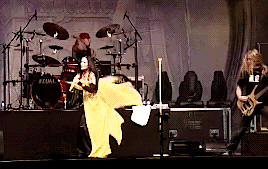





Tarja live with Nightwish in 2005
165 notes
·
View notes
Text
Arctic Monkeys full concerts

A handy compilation of filmed Arctic Monkeys concerts from 2005-2019.
This is mostly professional recordings, except where noted. Most are full sets. Will be updated when I find more! 💖
2005
Astoria London - October 2005 (UK)
Later... With Jools Holland - October 2005 (UK) Short set.
MTV Live in Liverpool - October 2005 (UK)
KCRW Session - November 2005 (USA)
2006
NME Tour + part 2 - February (UK) Second link, a fan recording from timestamp 22.00
Brixton Academy - February (UK) Fan recording.
Henry Fonda Theatre - March 2006 (UK)
MTV2 Discover & Download - April 2006 (USA) Short set.
Live at Bourges - April 2006 (France) Part set.
Les EurockÈnnes de Belfort + part 2 - June 2006 (France)
Rock Werchter - July 2006 (Belgium) Part set.
Oxegen Festival - July 2006 (Ireland) Part set.
T In The Park - July 2006 (Scotland)
Lowlands Festival - August 2006 (Netherlands)
Reading Festival - August 2006 (UK)
Summer Sonic - August 2006 (Japan) Part set.
2007
Razzmatazz Club - March 2007 (Spain)
Coachella Festival - April 2007 (USA) Poor image quality, audio ok.
Later... With Jools Holland - April 2007 (UK) Short set.
Virgin Festival - May 2007 (Canada)
Pinkpop Festival - May 2007 (Netherlands)
Glastonbury Festival - June 2007 (UK) Second link. Third link, better quality but only part of the set.
Rock am Ring - June 2007 (Germany)
Benicàssim Festival - July 2007 (Spain)
T In The Park - July 2007 (Scotland)
Summer Sonic - August 2007 (Japan) Part set.
Luna Park - October 2007 (Argentina) Poor image quality, audio ok.
KCRW Session - November 2007 (USA)
Live at the Apollo - December 2007 (UK)
2009
Rock For People - July 2009 (Czech Republic) Fan recording.
Reading Festival - August 2009 (UK)
Pukkelpop Festival - August 2009 (Belgium) Part set.
Liquidroom - October 2009 (Japan)
2010
Ciudad de las Artes y las Ciencias (MTV Winter) - February 2010 (Spain)
2011
BBC Radio 1'S Big Weekend - May 2011 (UK) Not complete.
Salt Lake City - May 2011 (USA) Fan recording, part set.
Hurricane Festival - June 2011 (Germany)
T In The Park - July 2011 (Scotland)
Benicássim Festival - July 2011 (Spain)
Roskilde Festival - July 2011 (Denmark)
iTunes Festival - July 2011 (UK)
EurockÉennes de Belfort Festival - July 2011 (France)
Lollapalooza - August 2011 (USA)
Rock En Seine - August 2011 (France)
Lowlands Festival - August 2011 (Netherlands)
Stubb's BBQ - August 2011 (USA) First show with the quiff. Fan recording, part set.
PromoWest Live Pittsburgh Stage - October 2011 (USA) Short set.
2012
L'Olympia Paris - February 2012 (France)
Coachella Festival - April 2012 (USA) Second link.
Quilmes Rock - April 2012 (Argentina)
2013
Hurricane Festival - June 2013 (Germany)
Glastonbury Festival - June 2013 (UK) Second link.
IN Music festival - June 2013 (Croatia) Part set.
Southside Festival - June 2013 (Germany) Part set.
Northside Festival - June 2013 (Denmark)
Super Bock Super Rock - July 2013 (Portugal)
Rock n Coke Istanbul - September 2013 (Turkey)
iTunes Festival - September 2013 (UK)
Austin City Limits Music Festival - October 2013 (USA)
La Musicale - November 2013 (France)
KROQ Almost Acoustic Christmas - December 2013 (USA)
Not So Silent Night - December 2013 (USA)
2014
iHeartRadio - June 2014 (USA) (Interview)
Pinkpop Festival - June 2014 (Netherlands)
Vieilles Charrues Festival - July 2014 (France) Part professional/fan recording.
Roskilde Festival - July 2014 (Denmark)
Rock Werchter - July 2014 (Belgium) Part set.
NOS Alive - July 2014 (Portugal)
T in the Park - July 2014 (Scotland)
Lollapalooza - August 2014 (USA)
Reading Festival - August 2014 (UK)
Personal Fest - November 2014 (Argentina)
Voodoo Festival - November 2014 (USA) Second link.
2018
Live At Maida Vale - June 2018 (UK)
Best Kept Secret Festival - June 2018 (Netherlands)
Royal Albert Hall - June 2018 (UK) Fan recording, part set. This video has a rare show from the NME Tour 2006 after the 2018 concert.
Nuits de Fourvière - July 2018 (France)
TRNSMT Festival - July 2018 (Scotland)
NOS Alive - July 2018 (Portugal)
Mad Cool Festival - July 2018 (Spain)
Lollapalooza - August 2018 (USA)
Manchester Arena - September 2018 (UK) Fan recording.
Hollywood Bowl - October 2018 (USA) Fan recording. Not complete.
Voodoo Festival - October 2018 (USA)
Austin City Limits Music Festival - October 2018 (USA)
2019
Jockey Club - March 2019 (Perú) Fan multicam recording.
Lollapalooza - March 2019 (Argentina)
Lollapalooza - March 2019 (Chile)
Asuncionico Festival - March 2019 (Paraguay) Part set.
Lollapalooza - April 2019 (Brazil)
Estereo Picnic Festival - April 2019 (Colombia) Second link. Last show of TBHC Tour
#arctic monkeys#alex turner#jamie cook#nick o'malley#matt helders#mp#resources#this took so fucking long to do#masterpost#but i feel better now that i have it all compiled like this#im such a nerd#i love collecting and finding out EVEYRTHING#i WANT TO KNOW EVEYRTHING#am#live concerts#live shows#festival
382 notes
·
View notes
Text
My Proposed Idea for Season 10 of The Genie Team
Last year, I made a post about my proposal idea for the 10th season of @grantgfan’s flagship series; “The Genie Team”. Where that proposed idea was about dinosaurs and other prehistoric animals appearing around the world.
Well, recently, I changed my proposed idea to where a b-plot for season 10 of The Genie Team revolves around the Bermuda Triangle and its mysteries.
Skull Island - This Skull Island is the 2005 Peter Jackson rendition of the island, except the island is at its original massive size (which is said to be a bit smaller than Madagascar). And all the same creatures detailed in the book “The World of Kong: A Natural History of Skull Island” are featured, as well as some OC creatures of my own to help flesh out the island’s unique and hellish ecosystem. And the hellish ecosystems and creatures of the island (from the coasts, lowlands, wetlands, jungles, chasms and highlands) fit in with the Bermuda Triangle’s history and mysteries, especially about the region being forbidden to step foot on.
Atlantis - Atlantis here is the same as in the cult Disney classic from 2001; Atlantis The Lost Empire. And in that movie, Milo Thatch mentioned that Atlantis was on a continent somewhere in the mid Atlantic Ocean. And the Bermuda Triangle is within that region of the Atlantic. And with the entrance to the underground cave/route to the lost civilization/city of Atlantis being guarded by the Leviathan, the giant machine would be revealed to be the culprit for the mysterious disappearances of countless vessels, including the USS Cyclops, in the Bermuda Triangle.
Davy Jones’ Locker - This Locker will be the same one as seen in “Pirates of the Caribbean: At World’s End”, being an endless sea stretching on and on forever. It’s where the souls of those who perished out at sea are sent to, as well as the ships that were lost and sunk, ranging from ocean liners to warships to cargo ships.
Portals - At rare and random times, portals open within the Bermuda Triangle’s boundaries, and dais portals are said to lead to alternate timelines, alternate realities, dimensions and other worlds. What’s even rarer is that anything form those portals could come through and enter this reality and timeline.
Evil Mermaids/Sirens - Unlike normal mermaids like Ariel, her sisters and King Triton… these mermaids are evil and are more akin to actual mermaids, which are evil, feast on humans and are often called Sirens. And these evil mermaids can reach far beyond the Bermuda Triangle and have seen many ship disasters over the centuries, including the sinking of the RMS Titanic, MV Wilhelm Gustloff, MS Estonia, etc…. Though these evil mermaids always watched from the shadows and claimed the corpses after the survivors and rescuers had left, so that these evil mermaids could keep their existence a secret.
Now I’ll be going into deeper detail about these three things in future posts, so start tuned for that. This post is to help introduce my proposed idea for season 10 of The Genie Team.
#the genie team#skull island#king kong 2005#atlantis the lost empire#davy jones locker#at world's end#bermuda triangle
2 notes
·
View notes
Text
01. Kate Bush - This Woman's Work [EMI, 1989]
02. Iannis Xenakis - Polytope De Cluny [Mode, 2008] [org. 1972-74]
03 Maja Ratkje - Octo [Rune Grammofon, 2002]
04. Pierre Bastien - Le Décalajdésson [Lowlands, 1999]
05. Ken Thomson w/JACK Quartet - Thaw [Cantaloupe Music, 2013]
06. Tom Bruynei - Reflexes
07. Rajmil Fischman - Alma Latina [Lorelt, 2001]
08. Paul Lansky - Idle Chatter [Bridge Records, 1994]
09. Unknown Artist - Alchemy
10. Lhasa - El Desierto [Les Disques Audiogramme Inc., 1997]
11. Bernard Parmegiani - Dynamique De La Résonance [Editions Mego, 2013] [org. 1975]
12. Lukas Ligeti - Chimæric Procession [Tzadik, 2008]
13. Oliver Coates - Another Fantasy [PRAHRecordings, 2014]
14. Nomadic - Trek 19 [Touchin' Bass, 2007]
15. Kaija Saariaho - Sept Papillons - For Solo Cello [Ondine, 2005] [org. 2000]
16. Chris Clark - Caveman Lament [Warp Records, 2001]
17. Horacio Vaggione - Agon [1998]
18. Curtis Roads - Tenth Vortex [Asphodel, 2005] [org. 2000]
19. Handel / Taverner Choir, Taverner Players, Andrew Parrott - Chorus: He Sent A Thick Darkness Over The Land [Virgin Veritas, 1990]
20. Carl Michael Von Hausswolff - As Far As It Goes Without
21. Original Swimming Party - Weeping Song II [2014]
22. Iancu Dumitrescu - Multiples (I) [Edition Modern, 2000] [org. 1971]
23. Efterklang - Cutting Ice To Snow [Leaf, 2007
36 notes
·
View notes
Video
youtube
Arcade Fire - No Cars Go (Live at Lowlands Festival, 2005)
#Arcade Fire#will butler#Win Butler#regine chassagne#Tim Kingsbury#Richard Reed Parry#Jeremy Gara#sarah neufeld
30 notes
·
View notes